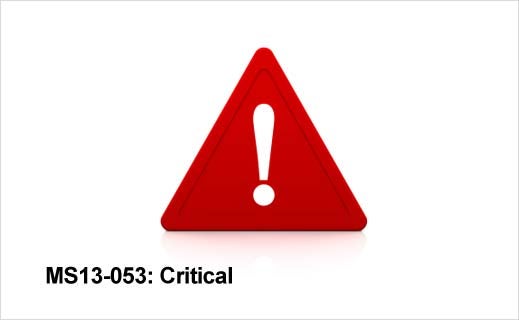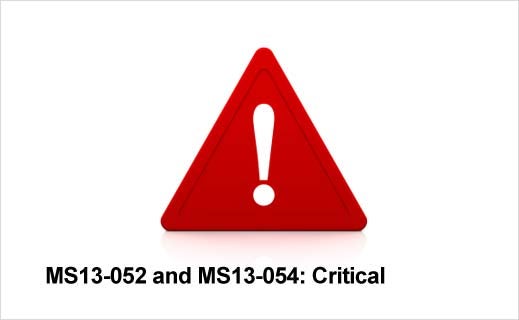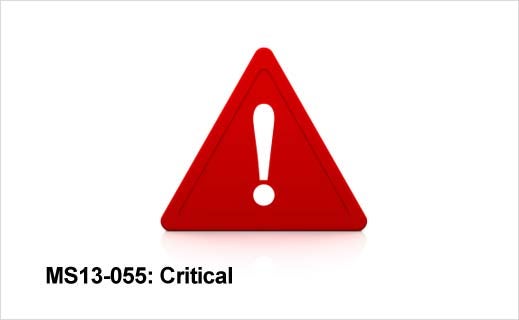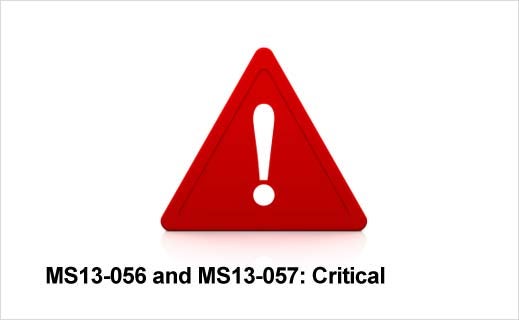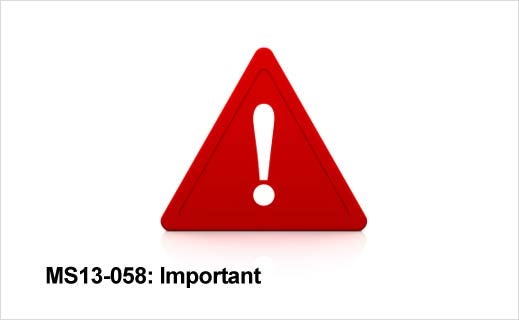IT admins may have taken the Fourth off to enjoy some fireworks, but they’ll be very busy this week patching their systems. It’s not a pretty Patch Tuesday this month with seven bulletins, six of which are critical. That brings our total of critical bulletins for the year to 22, which is fairly high, considering Microsoft released only 34 critical bulletins for the entire calendar year of 2012. July is one of the uglier releases we’ve seen from Microsoft this year. To say that all Microsoft products are affected and everything is affected critically is not an overstatement. It’s difficult to prioritize one or two because all the bulletins likely need your attention this Patch Tuesday.
While there may be speculation the extensive release is due to Microsoft’s bug bounty program, Paul Henry, security and forensic analyst at Lumension, believes that’s unlikely. Since the announcement of the program took most security researchers by surprise, it will likely be a few months before we really see the effects of the program. That said, he does expect to see the number of bulletins Microsoft issues increase over the second half of this year.
Microsoft has long resisted implementing a bug bounty program, which other vendors have found success with. The start of the program will likely increase the number of bulletins we see over time, but in the long run, will ensure that Microsoft products are more secure. It will also help motivate researchers to improve their disclosure with Microsoft over other sources that purchase vulnerabilities, which includes bad guys. This ensures Microsoft will be aware of vulnerabilities more quickly and we won’t see as many bugs being exploited in the wild before Microsoft is ready to release a patch.
All six of the critical bulletins this month are remote code execution vulnerabilities, which Henry finds concerning. Since these types of vulnerabilities give attackers access to your machine without needing physical access or sometimes even a password, it’s definitely a cause for concern.
Click through for a summary of updates included in July’s Patch Tuesday update, as identified by Paul Henry, security and forensic analyst at Lumension.
MS13-052, MS13-053, MS13-054 and MS13-057 affect most versions of Windows, including current operating systems Windows 8 and Windows RT. As Henry has said many times in the past, it’s never a good thing to see the current code base impacted, as that’s supposed to be the most secure version available. They also affect most recent versions of Windows Server.
MS13-053 should be your top priority this month. This is the vulnerability that was publicly disclosed by Google researcher Tavis Ormandy a few months ago. Thanks to that irresponsible disclosure, it is under limited active attack. Though it’s impossible to know for sure, it is Henry’s contention that we would not being seeing any active attacks with this vulnerability had principles of responsible disclosure been followed. In addition, Microsoft has identified a secondary attack vector through a remote code execution, which is also being patched by MS13-053. This secondary vector is not under active attack, fortunately.
Threat: Critical – Remote code execution
Restart: Required
Affected software: Microsoft Windows
MS13-052 and MS13-054 are interesting because they also affect programs outside of the operating system. MS13-052 affects Microsoft Silverlight 5 and MS13-054 affects Microsoft Office, Microsoft Visual Studio and Microsoft Lync (though only Lync is critically affected). It would be Henry’s guess that these programs are the vector for the attack. The remote code execution might be done through convincing a user to access a malicious file within one of these programs. These are related to a vulnerability in GDI+, which spans multiple programs, which is why these bulletins have such a far-reaching effect.
MS13-052
Threat: Critical – Remote code execution
Restart: May be required
Affected software: Microsoft Windows, Microsoft .NET Framework, Microsoft Silverlight
MS13-054
Threat: Critical – Remote code execution
Restart: May be required
Affected software: Microsoft Windows, Microsoft Office, Microsoft Visual Studio, Microsoft Lync
MS13-055 is another Internet Explorer issue, which we’ve seen quite a bit over the last few months. Henry cautions you to upgrade to the latest version of Internet Explorer, since that’s typically the most secure version. As to this vulnerability, it would be his assumption that this is another phishing-style vulnerability. An attacker would have to trick a user into navigating to a malicious Web page within IE before the RCE could be completed. This should be your other top priority for the month, with so many CVEs involved in this bulletin.
Threat: Critical – Remote code execution
Restart: Required
Affected software: Microsoft Windows, Internet Explorer
MS13-056 and MS13-057 are very similar to MS13-053, though MS13-056 does not affect Windows RT. Henry would guess that these are also kernel mode drivers or similar issues within the operating systems, though it’s great to see that it doesn’t impact Windows RT.
MS13-056
Threat: Critical – Remote code execution
Restart: May be required
Affected software: Microsoft Windows
MS13-057
Threat: Critical – Remote code execution
Restart: May be required
Affected software: Microsoft Windows
MS13-058 is the sole important bulletin in this batch. It’s an elevation of privilege issue affecting Windows Defender, which is Microsoft’s built-in security system. While it’s less worrisome than the other bulletins because it’s ranked important, it is still concerning in that it directly impacts the security system for the machine. Windows Defender is also free software, making it very widely used. If an attacker got in as a low-rights user and then used this bulletin to up their privilege level to admin, the impact would in fact be critical. Henry would rank this high in the priority list for that reason.
Threat: Important – Elevation of privilege
Restart: Not required
Affected software: Microsoft Security Software
Microsoft has also issued a security advisory this month with a Flash update and they’ve announced a new policy regarding the Windows app store. In order to help protect customers, when vulnerabilities in applications are reported, developers now have 180 days to submit updates to the applications. Updates will come through the Windows app store, which helps ensure that the updates applied are not malicious either. You may recall a proof of concept app from Duo Security that came out a few years ago. Google has since fixed the vulnerability that allowed malicious updates to be installed, but Henry is glad to see Microsoft is not venturing down that same road and is instead going with a secure model for updating applications.




